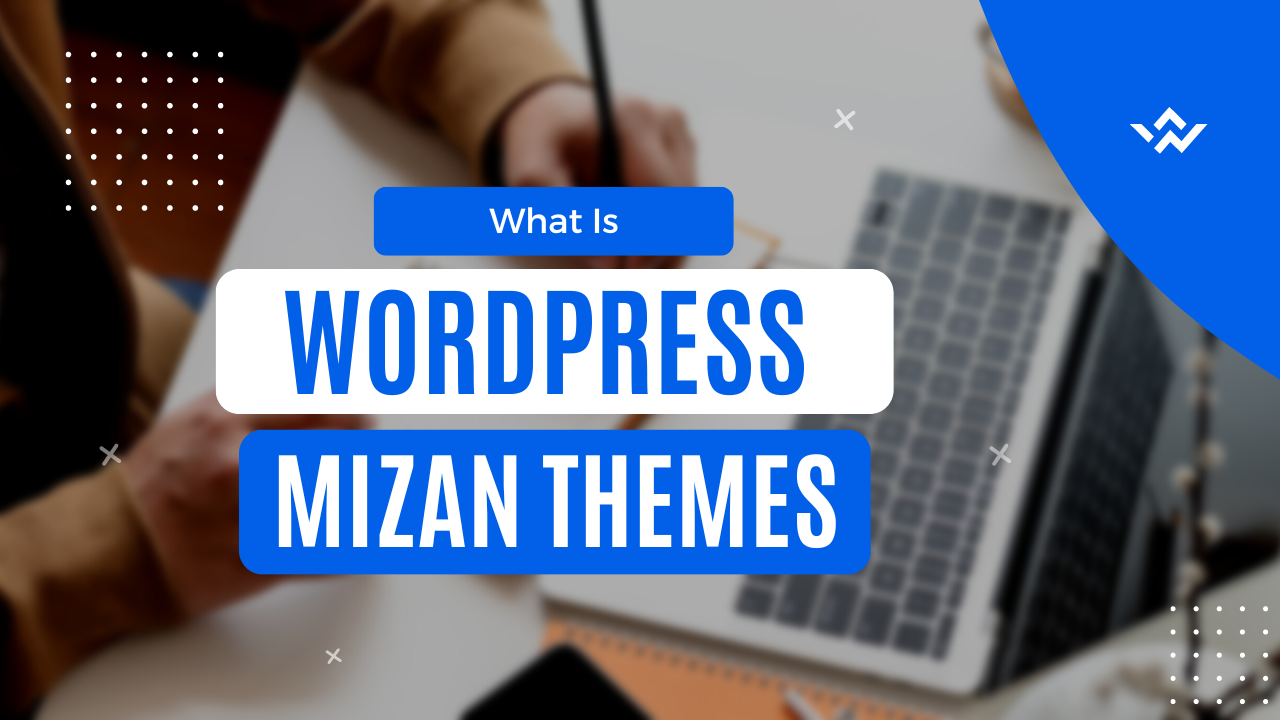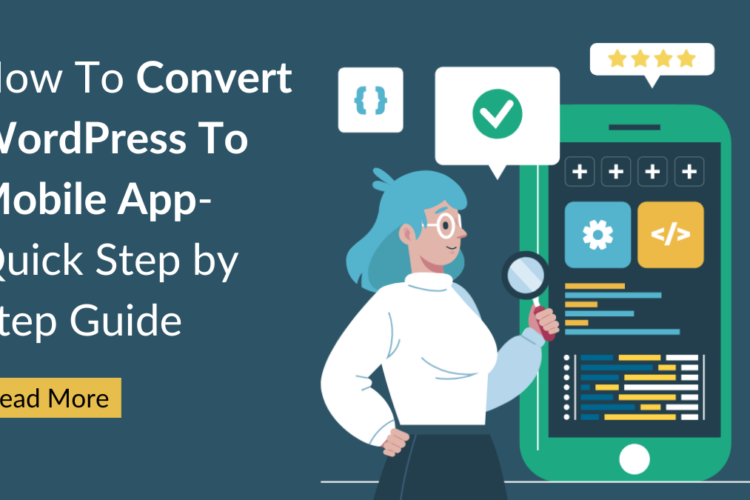
What Is WordPress – WordPress “creates websites like a factory”, which is a key analogy used to explain how WordPress works. It allows users to create and publish web pages while storing content, all they need is a domain and hosting service.
A template processor is used by WordPress’ web format system. It has a front controller architecture that routes all queries for URIs that aren’t static to a single PHP file that contains the main URI and determines the target page. This enables support for more readable by humans
What Is WordPress And Why It Is Used?
WordPress is a content management system (CMS) for hosting and building websites. WordPress includes a visual studio architecture and gives you the opportunity to customize any website for your company, organization, webpage, client base, or online store.
WordPress is a strong, self-published platform that enables both non-programmers and programmers to rapidly and easily produce and publish content.
WordPress Technical Data
WordPress is the most commonly used content management network in the world, supplying 34% of all websites. Moreover, WordPress has a 60.8% client base in the CMS market. WordPress powers 14.7% of the best websites on the internet.
What exactly is a WordPress plugin?

A WordPress plugin is an application that “plugs into” your WordPress site. Plugins can add new features to your webpage or enable new capabilities, enabling you to build nearly any type of website, from eCommerce stores to portfolio management sites to database sites.
Role of WordPress plugins:
You can increase or expand the functions and features of your WordPress website using plugins without modifying the core WordPress files. To “grip into” the program code, plugins use connectivity offered by the WordPress Plugin API, officially known as filter and activity hooks. These main routes and techniques will use the plugin’s functions at specific times and alter WordPress’ default operation.
36 Fantastic WordPress Plugins to Transform Your Website
- Yoast SEO
- Jetpack
- Elementor
- W3 Total Cache
- HubSpot
- WooCommerce
- OptinMonster
- ELEX Catalog
- UpdraftPlus
- Bloom
- Formidable Forms
- WPForms
- All-in-one SEO
- Smush
- Weglot
- iThemes Security
- WP Sticky
- MetForm
- Monarch
- XML Sitemaps
- Borderless
- Akismet Spam Protection
- WP-Optimize
- WordPress Subscribe Pro
- BuddyPress
- bbPress
- WebSub
- Redirection
- RafflePress
- WP Rocket
- 7th Contact Form
- Yet Another Related Post Plugin (YARPP)
- WP Notification Bar Pro
- Check for Broken Links
- DragDropr
- SeedProd
What are WordPress themes?
A WordPress theme is a collection of documents (graphics, template files, and software) that determine how your blog or web page looks. Themes could also control everything from your site’s design to the colours of your hyperlinks. A style is frequently thought of as the “surface” of your website, but they have far more impact than that.
Where to search for WordPress themes:
A theme can be purchased or downloaded for free. I strongly suggest purchasing a WordPress theme if you are a beginner so that you can get assistance learning how to use Elementor WordPress themes. Both my developer and I have run into problems and have discovered that it’s always best to have a company provide answers. However, don’t anticipate that the support will include any customization work.
Themes are available on WordPress.org, at various marketplaces where a variety of people and businesses sell them, and from specific theme providers.
How to install themes for WordPress:
To get started with this section of learning how to use WordPress themes, simply log into your WordPress dashboard and choose Add New under Appearance. Look for the theme in the directory or upload the theme file from your computer.
You’ve got it up and running in no time.Just turn it on at this point. Whenever the theme includes “dummy files,” import them. However, you might need assistance with this step. You can find more specific information about a first-time WordPress theme installation here.
Remember to use the child theme if it is available for your selection. In this manner, theme updates can be made without affecting customization. You should seek assistance with this step, in my opinion.
What kinds of websites can WordPress create?
WordPress was once usually used to identify blogs rather than more long-established websites. That hasn’t been the case in a great many years. Users can now establish a certain type of website with WordPress; congratulations on the changes to the basic software and WordPress’ huge ecosystem of plugins and themes.
WordPress, for example, not only powers many business sites and blogs but a large number of professional sites and blogs, but it is also the most popular method for creating an e-commerce website! WordPress allows you to create:
WordPress’s 23 most popular website designs: commercial websites:
Blog or Personal Website:
WordPress initially served as a straightforward blogging tool before quickly developing into a highly effective content management system. These blog and personal website elements haven’t disappeared over the past 16 years.They have improved in polish, sophistication, and strength. WordPress continues to be the world’s top blogging platform, used by both small and large publications.Because of its adaptability, WordPress works well for both single-author blogs and blogs with multiple authors. It enables you to build websites with lots of content that are simple to expand into a business.
Business Website:
The simplest way to create a business website that looks professional is with WordPress. Because of its strength, a lot of well-known companies use WordPress to power their websites.Its functionality and simplicity are adored by business owners. Users can add social media connectivity, search engine optimization, marketing data tracking, and any other feature they require by using WordPress plugins.Without paying a web designer, you can pick from thousands of themes and easily change the layout.
Online Courses:
It’s simple to create a virtual education community and sell courses using WordPress.For selling online courses from your website, Involves Courses is the best WordPress LMS platform. It has a user interface that makes it simple to design courses, manage access, and market memberships.
Pay-Per-View Website:
You can sell unique content from your website on a pay-per-view basis if you have a pay-per-view website.Users can purchase your content directly from you. rather than relying on affiliate links, advertising revenue, or other means of income. You can usually offer tickets, subscription plans, logins based on prices, and more.
Podcast Website:
Podcasting and WordPress go together. WordPress is the platform of choice for the majority of online podcasters.There are many top-notch WordPress plugins and themes for podcasting that significantly simplify the process. Additionally, you can use any podcast-sharing server to serve data from your own website without any issues.
Drop-shipping Website:
An eCommerce store type known as drop-shipping does not maintain a stock of the goods. After all, the shopkeeper places an order with a third-party reseller, who then ships the product directly to the buyer after the buyer makes a purchase.You can easily add products from third parties to your website with the help of some great drop-shipping plugins for WordPress.
Affiliate Website:
Want to refer your consumers to goods and services in exchange for a commission?Thousands and thousands of marketers use WordPress to build wildly popular affiliate websites. It has a tonne of plugins and affiliate marketing tools that can assist you in increasing your income.Either create an Amazon affiliate store that seems to be using just one substantial affiliate network or sign up for specific affiliate programs.
Non-profit and religious websites:
WordPress is free in the sense of freedom. It is the perfect solution for non-profit organisations because of this.Users could add a donation form to WordPress quickly and easily to raise funds for their cause.
Portfolio Websites:
Looking for a site to display your work? Your WordPress site can easily add a portfolio with fabulous image museums and photos.Your portfolio website can be used to highlight your writing abilities, highlight your music, attach videos, or present your photography.To make it simpler for visitors to browse and discover your work, WordPress can be used to create a very slick and refined customer experience for your portfolio site.
Travel Website:
The best platform for creating a travel website is WordPress. Sharing your own travel experiences or publishing travel tips can help you start a business.
Fashion and lifestyle websites:
Industries in the fashion and lifestyle industries frequently choose WordPress. That’s because it’s simple to create a website or blog with a professional appearance, and you can even advertise your own or third-party products.
Online Forums Website:
A well-liked method of fostering social interaction and utilizing consumer content to increase web search traffic to your website is through online forums. You can quickly add online forums to your website with bbPress. With the aid of bbPress, you can create a simple-to-manage forum on your website. Additionally, the same website can still be used for other features like a blog, an e-commerce site, or a company website.
What is the difference between WordPress.org and WordPress.com?
WordPress has choices available for you if you require a site to manage your e-commerce business, want to start a blog, or need a new website to acquire leads. You may have come across the WordPress.com and WordPress.org websites if you’re thinking about using WordPress to build your website. We’ll go over each option’s key characteristics, costs, and advantages and disadvantages so you can choose which is best for you:
Who made WordPress, and how long has it been around?
As of October 2021, 42.8% of the top 10 million websites used WordPress, making it among the most widely used content management system options. As a fork of b2/cafelog, WordPress was published on May 27, 2003, by its creators, American developer Matt Mullenweg and English developer Mike Little.
Branding: With the development of its logo in 2005, WordPress actually started to brand itself. Six project-related developers and designers started the initial stages of the “W” we know today through private email exchanges. They finally finalized the logo on May 15th, after a process that lasted several months.
Theme Detailing: WordPress’s Theme Directory was introduced in 2008. Users could create and upload themes to a database for the general public to use. There are currently more than 2,500 free WordPress themes available.
The Starting Point: In 2010, the WordPress Foundation was established. The organization that owned the trademarks for WordPress established the foundation in accordance with the goals of some of the original collaborators. To avoid exploitation and dilution should the trademark parent be acquired, it was intended to keep them apart from the business.
WordPress Today: More than 20% of all self-hosted websites are powered by WordPress. With various online blogs and communities devoted to assisting people in learning WordPress, creating new features, and troubleshooting any issues that may arise, the WordPress community is large and vibrant.
PHP, a server-side scripting language for Web development, and MySQL, an open-source relational database management system, make up the majority of its design, which is similar to that of the b2/cafelog foundation. It can be customised and is very flexible. In fact, Matt Mullenweg was successful in building the platform he mentioned in his initial blog post from 2003.
The Most Beneficial Reasons to Use WordPress:
(Let’s analyse the benefits of using WordPress to create your website.)
- WordPress is a free platform. Free software includes WordPress. It suggests that you are free to download, set up, use, and alter it as necessary to suit your needs. Any type of website can be made using it. Although the WordPress software is free, you require a domain name and web hosting to install it. The online location of your website is identified by its domain name. To visit your website, your customers type this into the address bar of their browsers. The place where all of your website’s files are kept is called web hosting.
- Using WordPress is Simple: WordPress is the most adaptable and effective platform, but it’s also very user-friendly for newbies. It has a clear and simple home screen with a sidebar listing the various menu options. You can easily make posts and pages, alter the appearance of your website, include navigation menus, and do much more. With no technical difficulties, WordPress makes it simple for complete newbies to establish their own websites. New information comes first. Notifications to the foundation of WordPress are frequently released and are easily installable. The same holds true for WordPress themes and plugins that publish their own notifications.
- SEO-Friendly: Even the most successful website will fail if it doesn’t receive any traffic or visitors. Surprisingly, WordPress was created using craft fiction from the imaginations of search engines. Semantic markup and high-quality code are used to create WordPress. This means that Google and other search engines adore WordPress in their non-geek definitions. This explains why WordPress sites typically rank higher in search results than other websites. We advise using a WordPress SEO plugin to optimize your site so that it receives even more traffic.
- WordPress Is a Secure Platform: WordPress is a platform for running websites that were created with security in mind. However, there are still many things you can do to further protect your website from malware, hackers, and other threats.
- WordPress Will Always Exist: Developers of websites come and go. Even the largest ones are vulnerable to disappearance (remember GeoCities?). The likelihood of open-source software remaining in existence for a very long time is much higher. This is so that it can be maintained by many different people and organizations since it is open-source software. Even if WordPress falls away, anyone can easily fork its code and quickly launch it under a different name. One of WordPress’s less well-known facts is that it has no CEO. The WordPress Foundation, a non-profit organization that ensures WordPress’s growth, has taken steps to protect the name “WordPress.” WordPress is supported by a large community of thousands of users, developers, and small businesses. They all work together as a community to make sure that WordPress continues to exist.
How do I install WordPress?
WordPress is renowned for being simple to install. WordPress installation is typically a very straightforward process that takes less than a few minutes to complete. Moreover, the following instructions will assist you if you want to install WordPress on your own.
The installation process consists of 5 steps:
- Install WordPress by downloading the zip file. You must first download WordPress itself. After all, if you have previously established connection speeds, this step will be straightforward.Go to the WordPress Download link and press the blue button there on the right. You’ll also see a Download.tar.gz link there, but you can successfully ignore it since you only need the.zip file. To continue, unarchive the files after saving them to your computer.
- Assemble a database and user for WordPress: You must then choose whether to set up a WordPress database and user. It’s worth looking into further because, depending on your host, you might not need to do this. Users can immediately ask the question or look it up in the documentation provided by your server. If you need to manually set up a database and consumer, you’ll also need to be aware of the web hosting control panel you’re using.
Users should be able to establish a database and user by continuing to follow a few installation steps. After that, you must edit the core WordPress files.
- Customize wp-config.php: Accessing a core WordPress file—wp-config.php— to enable WordPress to attach to your database is the next step in learning how to download WordPress. Users could do this after you’ve installed WordPress. It’s better to configure the file now because you’ll have to go back and redo everything if it fails to work. The first step is to change the name of the wp-config-sample.php file to wp-config.php in the WordPress files folder on your computer.
- Use FTP to upload your WordPress files. Your server can now be installed at this point. Accessing your FTP login information, which is typically located in your hosting panel, is required. Open FileZilla from this point on, log into your server, and use the right panel to navigate to your root directory. www. or public_HTML are common names for it. Open the left panel of your computer and navigate to the WordPress folder. Follow these steps based on whether you’re uploading it to your root directory or seeking to destroy it: Transfer the files directly into the root directory without first placing them in the WordPress folder. Subdirectory: Give the WordPress folder a distinctive new name before uploading the folder and everything inside of it to your server. All but the installation are finished at this point.
- Launch the WordPress installer: You must then launch the WordPress developer. Create your preferred browser and, depending on where you installed WordPress, perform one of the following actions: Go to the root directory at example.com/wp-admin/install.php. Subdirectory: Navigate to http://example.com/blogname/wp-admin/install.php, where “blog name” represents the name of the folder you selected in the previous step.



